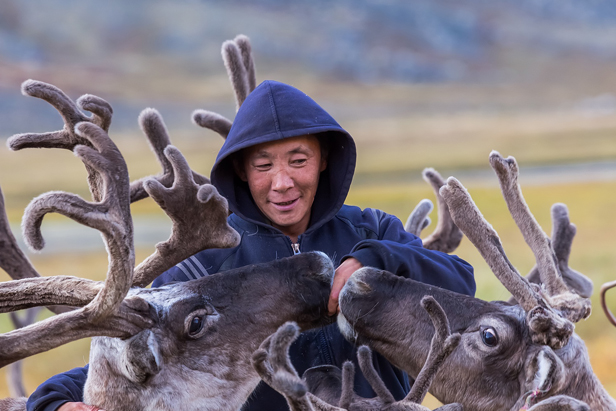Chasing the reindeer, and following the roe; My heart's in Chukotka, wherever I go


Photographer Kirill Uyutnov was born and grew up in Moscow. However, he soon realized and life in a big city was not for him. From the age of 11, Kirill began to study paleontology and take part in expeditions to different parts of Russia. It was during those trips that he became interested in photography and began making photoreports about his travels.
Kirill Uyutnov
Soon, in addition to geological expeditions, Kirill began taking long photo-expeditions to various parts of Russia. That was how he visited north and south Yakutia, Chukotka and Magadan Region, Maritime Territory and Kamchatka, Karelia and Kola Peninsula, Irkutsk Region and Transbaykal Territory, the North Caucasus and Crimea, the northern and Nether-Polar Urals, Putorana Plateau and Taymyr Peninsula.
Kirill Uyutnov
“I have visited remote regions of the Russian North and I saw the everyday life of the small indigenous peoples living there from a different perspective. It is quite different from what is shown on TV or printed on magazine spreads.”
Kirill Uyutnov
There are currently two types of reindeer farms, Kirill explains. The first are so-called family farms. They are run by people who have been engaged in reindeer breeding generation after generation. For them the herd is private property, i.e. they live and feed of their reindeer.
Kirill Uyutnov
Reindeer is the livelihood of numerous small indigenous groups populating Russia’s north. Reindeer farms often make up a large section of the economy of small rural settlements. Such is the story of these reindeer herders filmed in the valley of the river Burgakhchan in Chukotka’s Bilibinsky District in 2011.
Kirill Uyutnov
The second type is when a reindeer farm is run by hired workers. They are tasked with guarding pasture land, putting reindeer on range, as well as treating and looking after sick animals. However, they may be lacking the personal bond that links the herder and the reindeer when they know that the reindeer is theirs.
Kirill Uyutnov
These are hired herders working in the valley of the river Chibagalakh in Yakutia’s Momsky District in 2013. They are hired hands, like in any other agricultural production. This is the legacy of the Soviet system with its sovkhozs.
Kirill Uyutnov
“Sadly, in Soviet times there was prosperity, reindeer herders were educated and well-off people and reindeer received all the care they needed. Whereas today many reindeer farms find themselves in a dire situation,” Kirill says.

“Reindeer breeders lack the necessary education and knowledge and there are not enough of them to tend to large herds. There are not enough people to look after all the animals, as a result sickness among reindeer is on the rise, while annual increase in reindeer population is close to zero. It is hard work in harsh conditions. Provisions are poor and wages are not much higher than the average pension in a capital city.”
Kirill Uyutnov
“With the advance of technological progress, life for reindeer herders has not only not improved but has sometimes become even worse. The situation is the most acute at reindeer farms in the north of the Russian Far East, especially in Yakutia.”
Kirill Uyutnov
“Only an occasional tourist or geologists ever get access to those remote lands and see everything for themselves, but they do not have capability to inform the general public about what they have seen. I want to attract attention to the problems experienced by the reindeer industry with the help of photography,” Kirill explains.
Kirill UyutnovAll rights reserved by Rossiyskaya Gazeta.
Subscribe
to our newsletter!
Get the week's best stories straight to your inbox